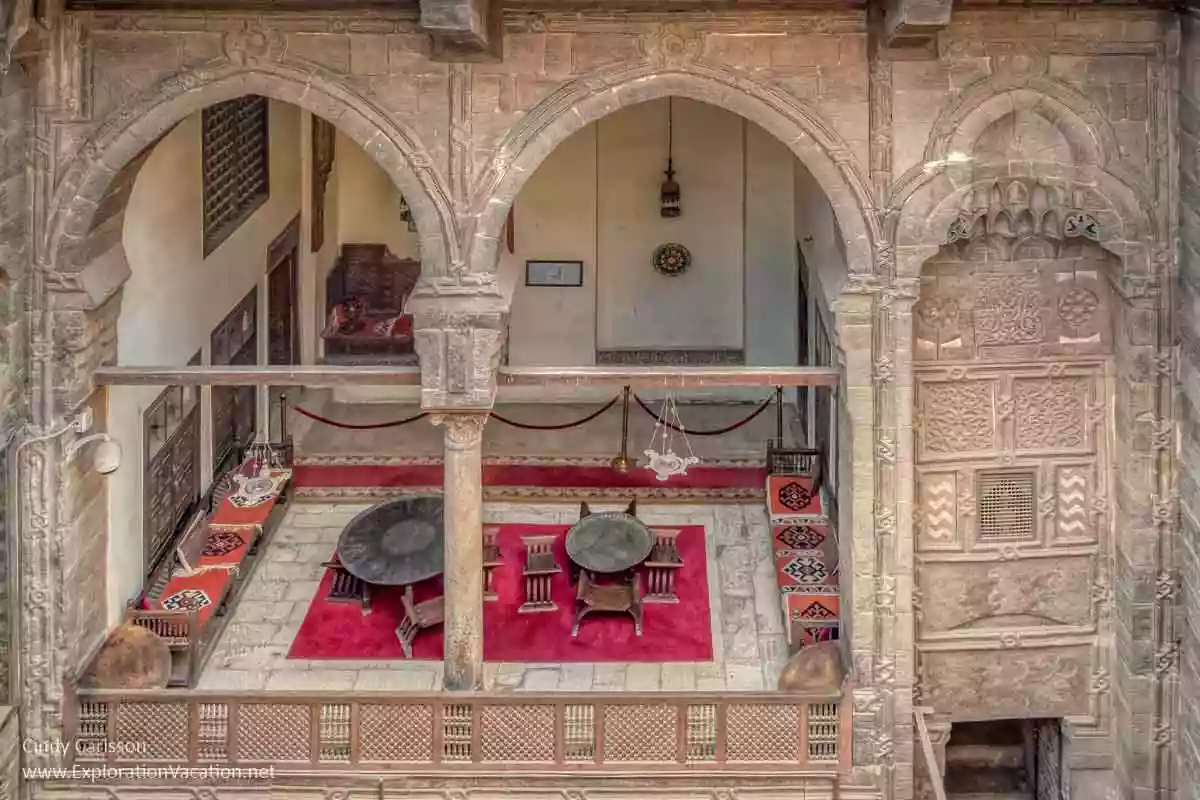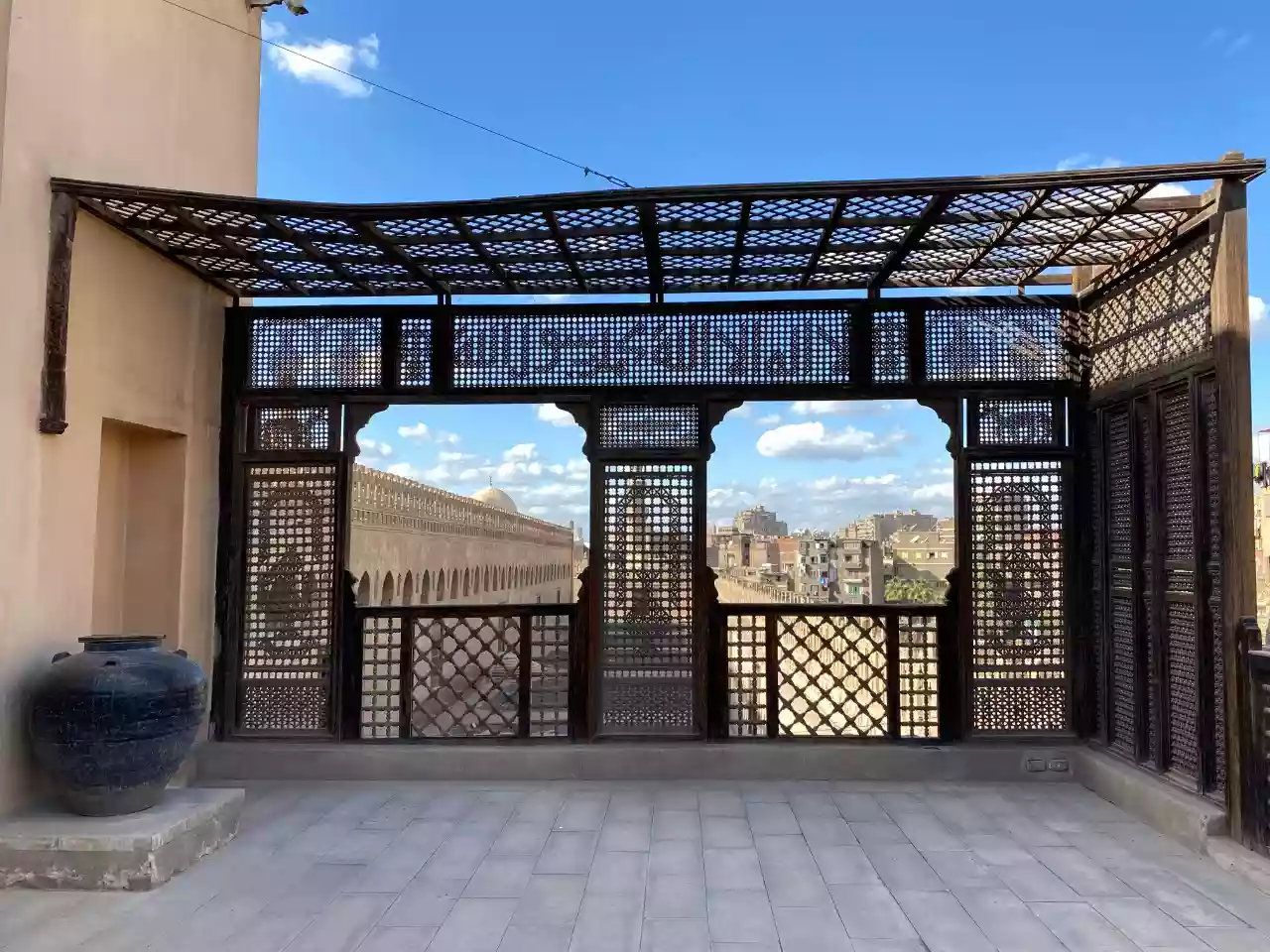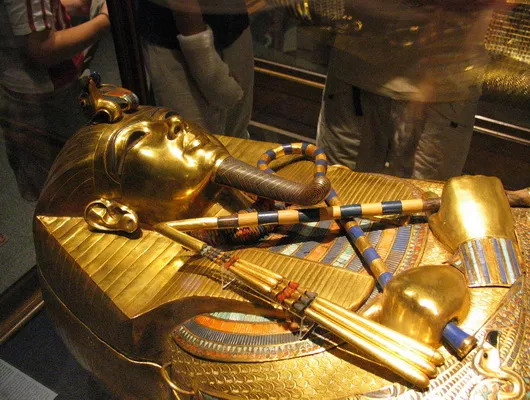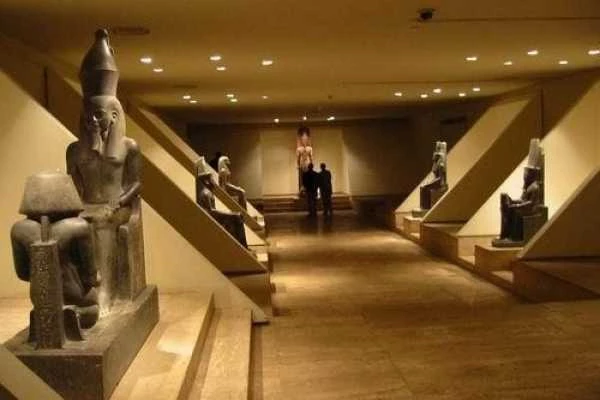History Of The Gayer Anderson Museum
Beit El Kertlia, or the Gayer Anderson Museum, is in a beautiful historical house in Cairo. It was built in 1631 by a wealthy man called Mohamed Ibn Hah Salem Ibn Gelmam. The house is considered one of Egypt's most marvelous historical structures, and the museum is a popular tourist attraction.
Historical houses like Beit El Sehemy and Beit El Kertlia exemplify how magnificent and great historical Islamic architecture was in Egypt. Several wealthy families lived in the place over time. Eventually, a lady from the island of Crete in Greece bought the house and lived in it, and this was why the house was named Beit El Kertlia, or "the House of the People From Crete."
Beit El Kertlia is located near the famous Ahmed Ibn Tulun Mosque in the Islamic area of Cairo. The museum consists of two historical houses facing each other, constructed during the Ottoman period. The first house, the Kertlia House, was erected in 1631, while the other one, Abdel Kader El Haddad, was constructed in 1540. A passageway connects the two houses.
How Did The Museum Get Its Name?
This structure was named the Geyer Anderson Museum because the Egyptian authorities granted the British officer Gayer Anderson the two houses as his residence in 1935. During his stay in this historical complex, Anderson collected a large selection of furniture, carpets, and many other Eastern and Egyptian handicrafts that are beautiful and interesting to tourists today. However, in 1942, Gayer Anderson had to leave Egypt because of an illness; the Egyptian government allowed people to visit the house and view his collection before eventually allowing the whole complex to become a museum.

The two houses include significant architectural features not only because the complex is among some rare examples that remain from the Ottoman period but also because of some other distinctive elements.
About The Gayer Anderson Museum
Among the most distinctive features of the Gayer Anderson Museum Complex is that it used to host a Sabil, which offered fresh water to the public. This feature is complex to find among historical houses in Egypt. The Sabil was considered to be a religious structure that was added to a mosque or a mausoleum to present people with their needs for water for doing ritual washing or wudu before Islamic prayers but finding a Sabil within a residential house was a rare feature in the Islamic architecture of the time.
The Sabil of the Gayer Anderson Museum is located on the right-hand side section of the ground floor with a window opening on the street from which the servant working in the Sabil used to give the water to the people. The room of the Sabil was made out of stones, and the Ceiling contains some remarkable geometric decorations with bright colors.
The Sahn, or the open courtyard of the house, has a semi-irregular shape with a white marble fountain in the middle. Like in many other historic houses in Egypt, the Sahn of the house is the heart of the house, with all the floors and sections of the house opening at the Sahn and not opening towards the house's exterior. This architectural design of houses was typical for several reasons; the first is to provide a sense of privacy, especially to the ladies of the house, and the second is to protect the house against dust and dirt, making the air inside the house cleaner and fresher.
All over the surface area of the Sahn, many pots take the shape of barrels, and they are based upon white marble basins where the water coming from the fountain is gathered to provide fresh water for the people living in the house. The rooms and the halls of the ground floor of the Gayer Anderson Museum Complex consist mainly of storage places for the grains and the food of the house's residents. At the back of the Shan, there is a horse stable that would host only a few horses.
The staircase leading to the house's second floor is located in the horse stable. The most dominating feature of the second floor is what is called the "Maqa'ad" of the house, which is a vast space overlooking the Sahn of the house. The word "Maqa'ad" means the sitting area where the people who lived in the house used to sit, especially men.
The Ceiling of the "Maqa'ad" is rather remarkable, with many marvelous plants and geometric golden decorations. There are also some decorated shelves around the "Maqa'ad," and this was where Anderson kept his glass items collection , which he was fond of.
Many of the architectural features of the house can be viewed from the Maqa'ad , including the decorated walls of the house that are distinctive with their white and red colors. The Maqa'ad can also admire the marvelous Mashrabeya screens of the house that overlook the Sahn. The other section of the second floor of the Gayer Anderson Museum is the Salamlek. In this hall, the men used to meet, and it is divided into three sections, the same as many other historical houses that date back to the Mamluk and Ottoman periods. There are two galleries surrounding the main chamber of the hall. Each gallery has many magnificently created Mashrabeya screens. The hall has many colorful pillows and wonderful wooden ashtrays decorated with mother of pearl and ivory.
The displays in the Salamlek hall include a collection of pistols that date back to the Ottoman era with their distinctive accurate ornaments. There is also a collection of swords of different sizes and shapes in the Salamlek Hall of the Gayer Anderson Museum. The sides of the Ceiling of the Salamlek Hall have remarkable decorations with geometrical patterns and Arabic calligraphy that include many pieces of poetry and different phrases from famous literary works.
The Ceiling is rich with its dark brown wood geometrical patterns and decorations. In the middle of the Salamlek hall, there is a large copper tray that dates back to the Ottoman period, and the house owner used it to offer his guests drinks and snacks. There is also a white marble shelve where they used to put the "olla," a traditional Egyptian water jug.
We have to note here that many exhibits and antiques that are displayed in the Salamlek Hall nowadays were not present here during the days of Gayer Anderson. Still, they were put recently when the house was modified to become a museum.
The Gallery of Photographs and Drawings hosts a rare collection of fishing, love, celebration, chanting, wildlife, flowers, and bird scenes. The portraits in this hall are exceptionally notable for their exceptional attention to detail and size. From the Gallery of Photographs and Portraits, we move to the Haramlek section, the section specified for the ladies of the house. This section features its beautiful Mashrabeya screens that overlook almost every area of the house and the lanes and streets outside it. Women used the Mashrabeya screens to look over the streets without being seen from outside. The Haramlek Hall is also featured with its many shelves and cupboards with excellent colors created in Persian.

The main staircase of the house leads to the roof that used to function as a seating area for the women in the summer. There are many basins of water of different sizes located in various locations on the roof for people to use to wash their hands and faces in the summer. Among the most beautiful sections of the Gayer Anderson Museum is the Persian-style bedroom of the owner of the house. The room has a magnificent bed decorated with ivory and a mother of pearl. There are also some candle holders and paintings making the room even more attractive to the eye. There is also the Turkish hall with its large Chair that has a crown on top of it suggesting that this was a royal hall. It also contains some pretty portraits of Mohamed Ali and Khedive Saied.
The Museum of the House consists of a large hall that displays the collection that Gayer Anderson gathered throughout his stay in Egypt. There are many items put on display in this room, including a large statue of Hatshepsut, a black statue of the ancient Egyptian cat god, Bastet, and many pieces of glassware and pottery.
The celebration hall of the Gayer Anderson Museum is one of the most luxurious halls in historical houses in Egypt. The hall is around 15 square meters in surface area that are divided into two galleries; the first is featured with its wonderful throne chair decorated with ivory and mother of pearl. The middle section of this hall has a wonderfully decorated white marble fountain and the floor of the hall is beautifully ornamented with different light colors of marble. Visiting the Gayer Anderson Museum in Cairo is highly recommended for history and Islamic architecture fans as most of the features of the house remain in good condition making the visit to the house an enjoyable experience and making you feel as if you are traveling back in time to the period of the Ottomans.
HOURS OF OPERATION:
Open Saturday-Thursday, 8:00 AM-4:00 PM
Friday, 8:00 AM-noon, 1:00 PM-4:00 PM
TICKET COST:
Egyptian: LE 2 (LE 1, students)
Foreign: LE 30 (LE 15, students)
Student rates are available to bearers of a valid student ID from an Egyptian University or an International Student ID Card (ISIC)
LOCATION:
Beit al-Kritliyya, Sharia ibn Tulun (next to the Mosque of Ibn Tulun)
DIRECTIONS:
BY TAXI: Ask for "mes-ghid ibn tulun." The museum is attached to the southeast corner of the mosque.
Direction from Tahiri Square :
View Larger Map
Please note: the museum is not wheelchair accessible.


















